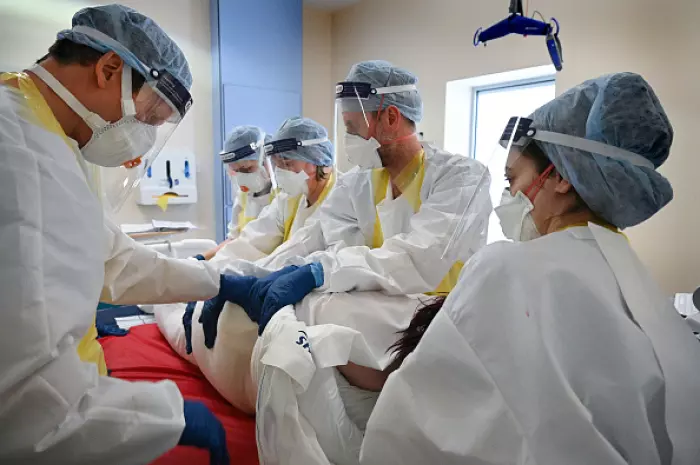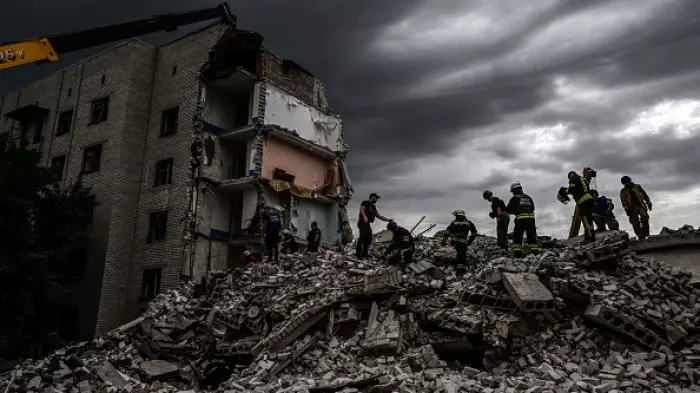The Declaration of Independence initially drafted by Thomas Jefferson and adopted in 1776 by the 13 British colonies of what now constitutes the eastern seaboard of the United States begins with the following powerful words:
"We hold these Truths to be self–evident, that all men are created equal, that they are endowed by their Creator with certain unalienable Rights, that among these are Life, Liberty, and the Pursuit of Happiness…"
Putting aside, or adopting a liberal take on the creator reference, this is great stuff. Unfortunately, the constitution of the United States that followed legitimised slavery, failed to enfranchise women and was used to rationalise genocide against native Americans.
However, I was struck by the relevance of the expression that some truths can be seen to be self-evident, even when not in the noble context of the writers of the declaration, to two developments in Aotearoa New Zealand’s public health system. Political irresponsibility and incompetence characterise both.
An undeclared state of emergency
First, the Association of Salaried Medical Specialists (ASMS) has recently publicly opined New Zealand’s health system is now in an undeclared state of emergency. This was in the context of the anticipated impact of the highly transmissible omicron variant of covid-19 (given the visible devastation in many parts of the world including as close as Australia) and the severity of the shortage of health professionals in the public health system, including medical specialists and nurses.
As someone who was central to the leadership of ASMS for over 30 years from 1989, I absolutely endorse ASMS’s statement. It hits the bullseye. A declared state of emergency is a temporary system of rules to deal with an extremely dangerous or difficult situation.
On March 25 2020 there was a government declared state of emergency for the national lockdown in response to the arrival of the coronavirus pandemic. This was appropriate.
If the current situation does not constitute a state of emergency I don’t know what does. It is not just the readily available and highly visible evidence of the harm omicron can do to New Zealand. It is also the woeful state of our already overworked, fatigued and burnout health professional workforce due to poor political leadership of our health system.
But I have a slightly different (but non-conflicting) emphasis than ASMS. I see it through the lens of an ignoble self-evident truth. What is the difference between an undeclared and declared state of emergency? It is the absence or presence of political leadership. In this case, political leadership is absent.
The disgraceful neglect of the health professional workforce is directly attributable to successive governments. The current Labour-led government inherited shortages from its National-led predecessor but opted to let them further deteriorate. Based on its public statement, if our public health system did not have these shortages, ASMS would not have described the current situation as an undeclared state of emergency.
The ignoble self-evident truth is that the failure of this government (compounding the failure of its predecessor) to address severe workforce shortages despite being in office since October 2017 is responsible for New Zealand’s health system being in an undeclared state of emergency now that omicron has arrived.
Health restructuring (especially during a pandemic)
The second development was the inexplicable and unexplained (other than by simplistic misleading soundbites) decision of the government to restructure the structures statutorily responsible for primary, community and hospital care. That is, by abolishing the district health boards (DHBs) and replacing them with a new top-down more distant national bureaucracy (additional to the health ministry).
DHBs are poorly understood and often scapegoated for poor national decision-making. They were established by the Public Health and Disability Act 2000. Their novelty included being responsible for the health and well-being of geographically defined populations and integration between community (including general practice and aged residential care) and hospital care.
This responsibility has been a strength of our public health system. This includes the obligation to “regularly investigate, assess, and monitor the health status of its resident population”.
Structurally, this gives New Zealand’s public health system significant advantages over many other modern health systems, including those of Australia and England where, for different reasons, community and hospital care are much less integrated by being more structurally separated.
While Aotearoa’s response to the pandemic has not been a failure (a success by international standards), there have been failings beginning with the inadequate supply of personal protective equipment (PPE). Responsibility for PPE was assumed by the health ministry but it lacked the capabilities in the area of specialised supply lines. Consequently larger DHBs possessing more experience came to the rescue. Consistently subsequent failings have primarily rested with decision-making at the central government level.
Central government constraints
DHBs were constrained and at times frustrated by health ministry leadership during the vaccine rollout because of the political control they are under. They required operational approval for various steps on the way rather than them being allowed to use their discretion for populations they knew better than the ministry.
This constraint on DHBs even included when they could notify relevant community bodies and the public when there were delta variant cases despite the importance of early notification. Further, they could not defend themselves where this might contradict government or health ministry assertions.
DHBs became the public scapegoat for difficulties during the vaccine rollout. Canterbury and Capital & Coast DHBs were singled out for media focus for alleged slowness while associate health minister Peeni Henare got stuck into Tairawhiti and Taranaki DHBs with the same allegation.
Despite this blame apportionment the vaccine rollout by DHBs proved to be a success by international standards, one of the highest in the world. Our fully vaccinated rate was even higher than the European Union which had the massive advantage of being able to both negotiate as a powerful collective bloc with the monopolistic pharmaceutical companies and have within its membership vaccine producing countries.
In fact, a self-evident truth of the noble variety is that the uniqueness of having statutory local structures responsible for geographically defined populations proved to be a major factor in this success. Despite having no control over supply DHBs were able to compensate for our disadvantage as a small economy far away from vaccine producing countries.
The publicly maligned Canterbury and Capital & Coast DHBs proved to be among the best achievers of the full vaccination milestone, just slightly behind the better placed Waitemata and Auckland.
In fact, DHBs achievements ranked comparatively according to workforce size and population density. The bigger DHBs workforce and the denser their population, the sooner they achieved vaccination milestones. Generally speaking, it was the DHBs with smaller workforces and lower population density because of rural communities that were comparatively slower such as the unfairly maligned Tairawhiti and Taranaki.
A ripple effect
The effect of omicron is going to put the whole country’s health system under unprecedented dangerous pressure, especially our public hospitals. No longer will the impact be confined to a region.
Transmission will be too high and fast to prevent increasing hospitalisations. This will likely increase mortality rates even though the delta variant is more deadly. Hospitals are also likely to be bogged down by what is known as long covid where the effects of the virus continue for weeks or months beyond the initial illness.
This will leave our public hospitals unable to do much else than do their best for covid-19 patients (avoidable compromises in their care will have to be made). Their workforce is already overstretched and fatigued. Expect to see seriously delayed cardiac and cancer surgery as one initial effect. Other treatments and possibly diagnosis can also be expected to be delayed.
Further, omicron won’t be the last covid-19 variant this year. Some of its successors will be less and others more virulent. Already there has been a new sub-variant of omicron; fortunately not more virulent.
So what does the government do? In the midst of this calamity it abolishes the bodies responsible for the health and wellbeing of their defined populations including public hospitals. The second ignoble self-evident truth is restructuring the health system in the middle of a pandemic is not just sheer madness; it is the height of leadership incompetence and irresponsibility.
Health professionals will pay for this with their health. Thomas Jefferson would not have approved.














